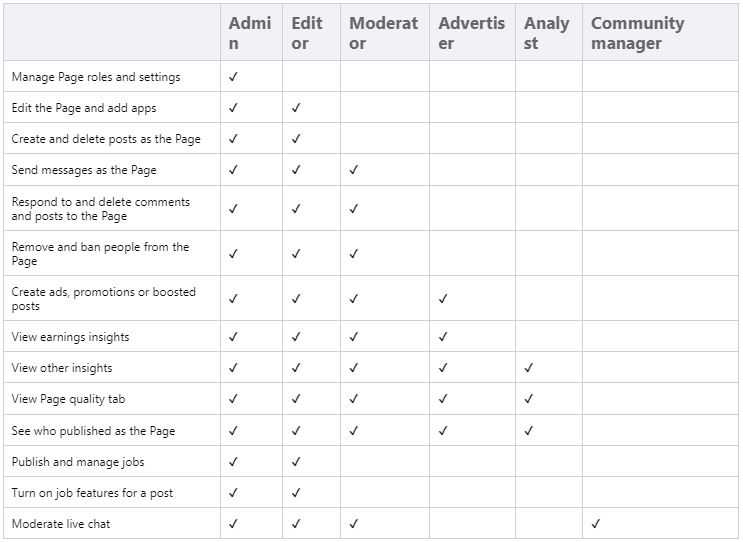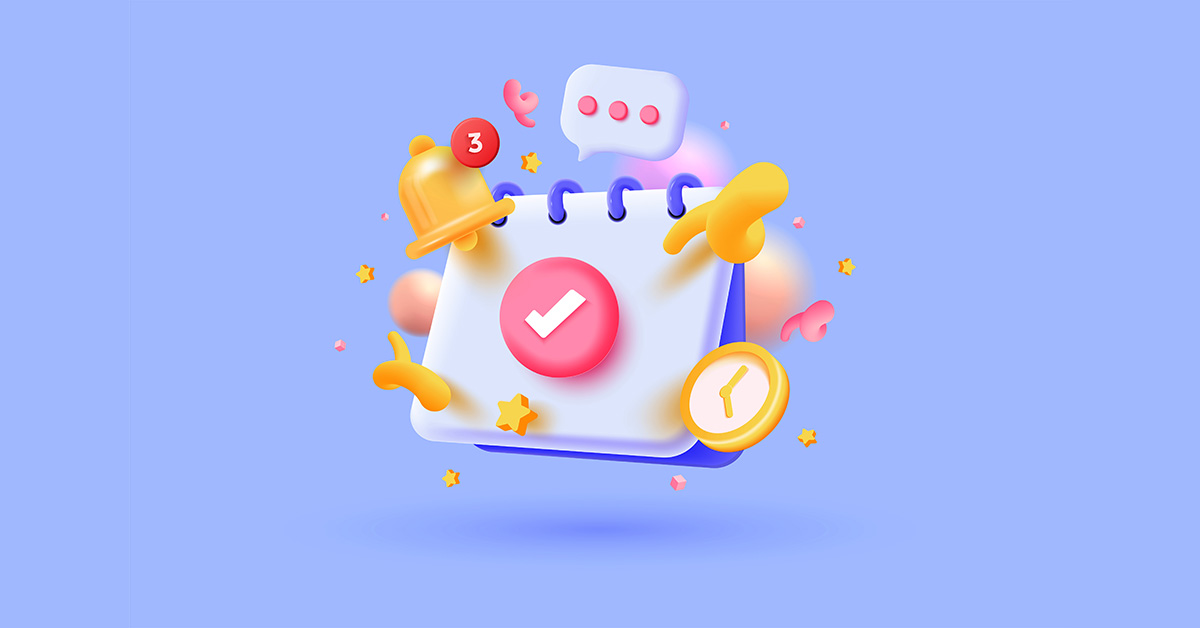Since its inception in 2004, Facebook has come a long way from ‘pokes’ and ‘throwing a sheep’ at someone. Today, Facebook is used by over a billion users to connect with family and friends as well as large brands and small businesses. This guide will take a deep dive into Facebook as a marketing platform and how you can leverage the platform into monetary gains for your business.
Here are some of the things we will be discussing in this blog:
A-Z of Facebook
Why should you use Facebook for marketing?
Should I set up a group or page for my business?
Setting up a Facebook group
Setting up a Facebook page
How to create a Facebook page
How to begin optimising your Facebook business page
Assigning roles on Facebook
What types of posts can I make on Facebook?
The dos and don’ts of Facebook marketing
Facebook advertising for business
Why should I use Facebook ads?
Choosing the right campaign objective
Types of Facebook ads
A-Z of Facebook
Each social media channel has its own set of acronyms. This section will explore some Facebook-specific acronyms.
A
Account ID – The number associated with your Facebook ad account.
Ads – Paid advertising run on Facebook to reach a wider audience.
Audience – Used in ads, your audience is the users that could potentially see your ad. You can also create your own audiences using saved audiences, lookalike audiences or customised audiences.
B
Business Suite – A one-stop for managing business pages. Here you can access your messages, schedule posts, run ads, and view your page analytics.
C
Cost per pixel event – In ads, you can set up pixels that track certain actions (these could be “added to cart,” or “registration completed”).
E
Engagement – People who act on your post (likes, shares, comments).
Event – Pages can post events that take place on and off Facebook.
F
Friend – Someone whom you have connected with on Facebook.
Follower – Someone who follows your business.
G
Groups – A collection of people who share a common interest.
I
Insights – In Business Suite, Insights covers multiple insights from audience insights to benchmarking against other pages.
L
Live – A live video is exactly that, a live video.
N
Notification – Every time something that directly involves you on Facebook, you will get a notification.
News Feed – What you scroll through. A highlight of your friend’s updates.
P
Page – A profile for a business, celebrity and much more.
Pixel – A piece of code that you place on your website. This collects data that works with ads (for example, actions taken).
T
Tag – You can tag a person or a page that you follow in your post by using @ and entering their username.
Why should you use Facebook for marketing?
There are several key reasons you should consider using Facebook as part of your marketing strategy.
- Facebook has an average of 1.62 billion users a day, and in the UK, 66% of the population uses Facebook (Social Shepherd).
- 84% of millennials and 74% of Gen X’ers use Facebook (Facebook).
- The UK spends an average of almost 2 hours a day on social media (Statista).
- Facebook is still one of the most popular social networks.
Should I set up a group or page for my business?
If you want to communicate and connect with your audience, then a Facebook presence is necessary. We recommend you choose a page over a group. Pages are generally for businesses and public figures who want to connect with their audience. Groups are a community centred around a common interest, and this allows people to interact with each other.
Setting up a Facebook group
While you will need a business page, a group can be useful too. You could set up a group around a shared interest. For example, if you required product testers, you could have a closed group of people who have tested your product or would be willing to. A closed group is something you want to be kept private and by invite only. An open group is a group of people who have a shared interest, and anyone can find and enter the group. For example, if you run a fabric shop, you could have a Facebook group where people show off their makes with your fabric. If you want to set up a group, follow the process here:
- On your Facebook feed, click on “Groups” and then “create new group”.
- Enter the name you want for your group (this could be your business name).
- You then get to select if you want your group to be visible to others or hidden.
- Add people to your group (friends etc).
- Click “create”.
- Once created, upload a cover photo (1640×856 px). Try and include your logo on the image so people can recognise the brand.
Setting up a Facebook page
If you are new to Facebook or unsure about Facebook pages, this section will cover everything from creating and optimising a Facebook page, to assigning roles.
How to create a Facebook page
This section will help you to set up a page and assign page roles. First off, we want to look at setting up a Facebook page. It is not a daunting process and Facebook walks you through a lot of the steps, which is useful. To set up a business page, you will need to have a personal Facebook profile.
- Go to pages and profiles and click on “+Create New Page”.
- You will then need to name your page (for Businesses, this will be their business name). You will also need to find the category that closely matches your business and then include a description of what your business does/what services you provide and then click create page.
- You should then add additional in additional information. The first thing you need is a profile image (most businesses use their brand’s logo). This image should be 170×170 pixels and the image will be cropped to a circle, so make sure there is nothing important in the corners!
- The next image you need is a Cover photo. Simply click “Add Cover Photo” and add a photo that conveys what your business is. For example, if you are in hospitality, you could add a picture of your signature dish. This image size should be 1640×856 pixels. If you are happy with your images, click “Save.”
- Facebook then gives you the option of connecting your business page to your WhatsApp. (You don’t have to include this.)
- Facebook now allows you to include your username (max 50 characters) with an @ symbol. Ours for Facebook is @LOCALiQUK and can be seen in the search bar

- Your business details are one of the most important parts to fill in. This information will help you get found on and off Facebook. This information will be in the “Set Your Page up for Success.” You can add your website, location, and business hours. You can also add an action button that acts as a CTA. There are many options here from a simple follow, to “send message,” “start order” and “book now.” Choose the one that will be best for your business and your current needs.
How to begin optimising your Facebook business page
You have created your page, created a few posts, and invited people to your page so hopefully, you are ready to take your content to the next level.
- Templates & tabs – One of the many wonderful things about Facebook is that it includes pre-set templates for your business. You can also customise the tabs to suit the business.
- Pinned post – This will be the first post someone sees when they scroll through your page so make sure it is attention-grabbing. A pinned post is a fantastic way to let everyone know of upcoming and ongoing promotions.
- Link to your Facebook page from your website and other pages – These backlinks are great to help build the credibility and trust of your business.
- Get verified – Want that blue tick next to your business page? You need to apply and wait for Facebook to verify you. We recommend waiting until you have at least 500 followers and are posting relevant content regularly. We have written a piece on how to get your page verified.
Assigning roles on Facebook
You can add multiple team members to your Facebook page granting them varying levels of access to the account.
Admin – If you created the page, then you are the admin. You have full access to all the features and settings and are the one person who can assign roles.
Editor – Has the same access as the admin, except they cannot manage page roles and settings.
Moderator – These people can send messages and respond to comments on the page.
Advertiser – This person creates ads and views insights only.
Analyst – An analyst can see the insights on the page.
For a more in-depth look at each role and permissions, Facebook has created this handy table:

Image Source: Facebook
Once you have decided on what role you want someone to have, you need to assign them a page role. There are several simple tasks to do to assign a role:
- Go to your business page, select settings at the top, and then select page roles in the left column.
- You then need to type in the chosen person’s name or email address until their name appears in the list.
- Select one of the job roles listed above and click to assign the role.
- You will then need to enter your password to confirm these details.
- The person will need to click on accept the role to fulfil the page role.
What types of posts can I make on Facebook?
Facebook has plenty of options for choosing what type of post.
- Organic text-only post – While you can do this, it will not get you a high volume of interactions, posts with images or videos do a lot better.
- Organic photo post – like the text-only post, but with photos added. These images should be 1200×630 pixels in size.
- Organic video post – For videos, a size of 1280×720 for both landscape and portrait with an aspect ratio of 16:9 (landscape) and 9:16 (portrait). With video, remember to include captions as 85% of video is watched without sound. The maximum file size is 4GB (or 240 minutes), although we suggest limiting the length of your video to under a minute.
- Stories and Reels – You can use hashtags to appear to a wider audience here. We recommend an aspect ratio of 9:16 with a resolution of at least 500×888 pixels. Videos need to be under 30 seconds.
- Ads – Advertising on Facebook is great due to the sheer volume of people on there. We will discuss this in more detail later in the article.
The dos and don’ts of Facebook marketing
While Facebook may be a great marketing tool, you do need to do some work on your page to build rapport and trust. Here are some dos and don’ts of Facebook marketing.
Do
- Define your audience – You need to learn about your audience and what makes them tick. Find out more about audience personas in our blog.
- Post regularly – To keep your business relevant in people’s feeds, you need to ensure you are posting regularly, from several times a week to 1-2 times a day. You can even use scheduling tools such as Hootsuite or Later to schedule your content, although Facebook’s business suite is great for posting across Facebook, Instagram, and stories.
- Post a variety of content – Your audience will want to see varied content, so post some images, videos and even GIFS. You may want to gather opinions and Facebook is great for that too. Just post a question and see the answers roll in.
- Engage with your audience – social media is great for having conversations. If someone comments on your post, then give him a like or comment back to them. These small engagements go a long way to showing the brand in a positive light.
- Social Listening – You can perform social listening and see what people think of your brand. Our handy blog helps you to understand social listening.
- Share users’ content – While it’s great to make loads of content, we know how time-consuming the process of content curation is. If you have customers posting a video or image of them using your product then repost it, with their permission of course!
- Track your metrics – Every business is different and that means that each business will have unique customers and industry standards. Consider what metrics matter to your business (for example, impressions or interactions). Using these metrics, you may also notice patterns emerging regarding the times you post, all these metrics will allow you to see the bigger picture and be able to adjust accordingly.
- Get a shop – If you are selling products, then you need to consider getting a Facebook shop. You don’t even need a website to do this, although if you do have a website, you can link them both up!
Don’t
- Don’t argue with customers in a public space – If a customer has an issue, don’t get into a row, as this could go viral (in a bad way) and then you have a whole PR crisis on your hand. The best thing to do is ask them to PM (private message) you and discuss things with them in private. You can also offer your email address or telephone number to resolve the issue.
- Don’t ignore issues – Similar to above, you want to respond to any potential issues and not ignore them.
- Don’t ignore Facebook – You may have scheduled your posts for the next few weeks, but you still need to be checking in to see if you have had any comments.
Facebook Advertising for business
Setting up Facebook ads is not an overly complicated task, and it can allow you to achieve fast results. This section will break down the several types of ads you can run.
Why should I use Facebook Ads?
As we said earlier, Facebook has one of the largest demographics of any social network, so it makes sense to advertise your goods and services here.
- Facebook ads are cost-effective – You can choose your daily budget as well as the length of the campaign, ensuring that you don’t go over your budget.
- Excellent targeting options – You can really drill down into your audience, so you know that your ad is going to be seen by the right people. As long as you know your audience personas, you can utilise this function to get your messages to the people you want.
- Highest ROAS (Return on ad Spend) of any social media site – Users are more likely to click on an ad on Facebook than on other social media channels and even Google. In fact, Facebook accounts for over 40% of digital display ad revenue!
- Huge audience to market to – No other social network boasts the same audience numbers as Facebook. With two-thirds of adults on Facebook, that is a huge marketing potential!
- Facebook ads manager – Ads manager can give some unbelievably detailed reporting and enhanced statistics and measurements that you don’t get elsewhere.
- A/B Testing – Again Facebook excels here with A/B testing. A terrific way to test your audience, or even ad copy. Just remember to only change one variable at a time to see what works well.
We also have a handy guide to setting up Facebook ads.
Choosing the right campaign objective
Facebook used to have 11 different ad objectives to choose from but are in the process of simplifying the process and giving 6 options to choose from. We will look at these objectives as well as let you know what the old objective was.
Awareness – This aims to create awareness of your business. This objective will help you to reach those that would be most likely to remember your ad. Awareness objectives are perfect for brands that are new or have recently undergone a rebrand.
Previous ad objectives – Brand Awareness, Reach, video views, store traffic.
Traffic – This objective aims to increase traffic to an online destination. This could include your website, an app or even your Facebook shop. This objective works well for sales.
Previous ad objectives – traffic.
Engagement – This objective looks at ways to find more people to engage with your business online. Engagement can take many forms; likes, comments, starting a conversation on messenger with you or performing any desired action.
Previous ad objectives – Engagement,
Video views, Messages, Conversions.
Leads – Leads are ways to gather potential clients’ data by getting them to perform a simple action such as signing up for a newsletter.
Previous ad objectives – Lead generation, Messages, Conversions.
App promotion – These ads get people to install your app on their phone or take specific action within the app.
Previous ad objectives – App installs.
Sales – This will help you to find people who would be likely to purchase your goods or services.
Previous ad objectives – Conversions, Catalogue sales.
Types of Facebook Ads
Facebook allows you to upload a single image or video, as well as a carousel of videos and or images. You can even add an app with a download link. To find out all the different ad types, see our blog on setting up paid ads.
We love paid social media marketing and run many campaigns for a variety of clients. If you feel we can help you in any way, contact us today for a free consultation. We also have a monthly newsletter that is packed with helpful tips and tricks to elevate your marketing as well as industry news stories. why not sign up today?





